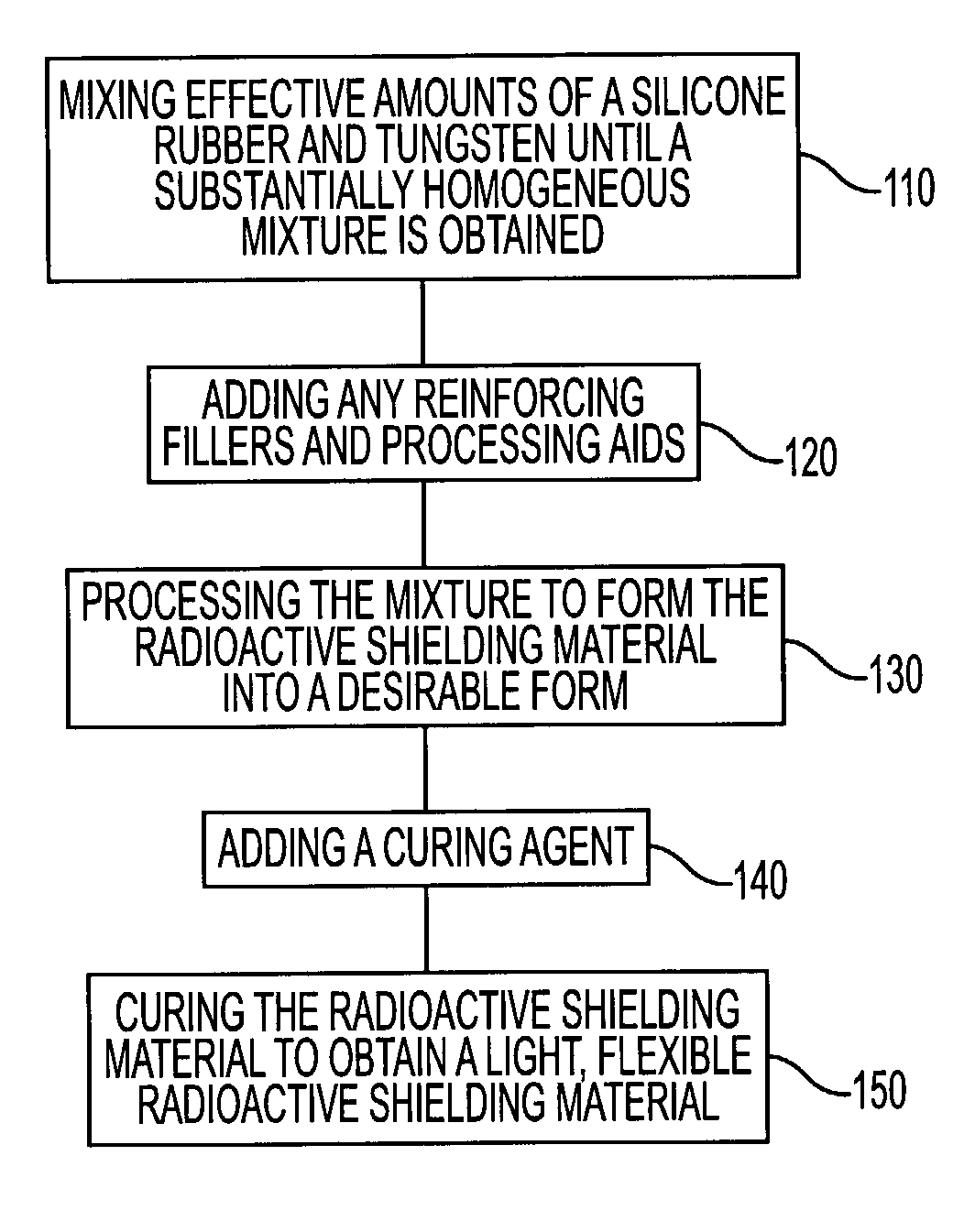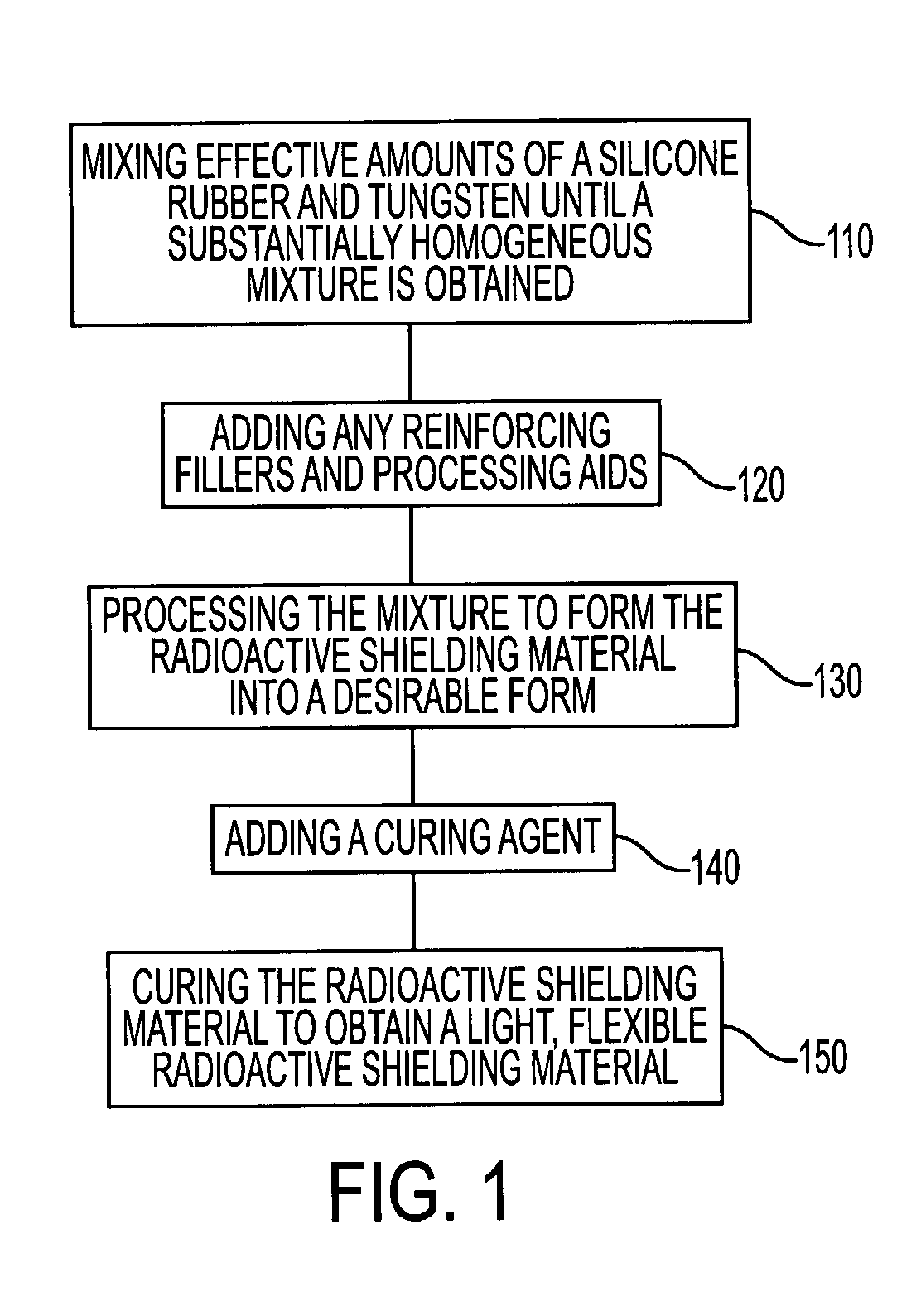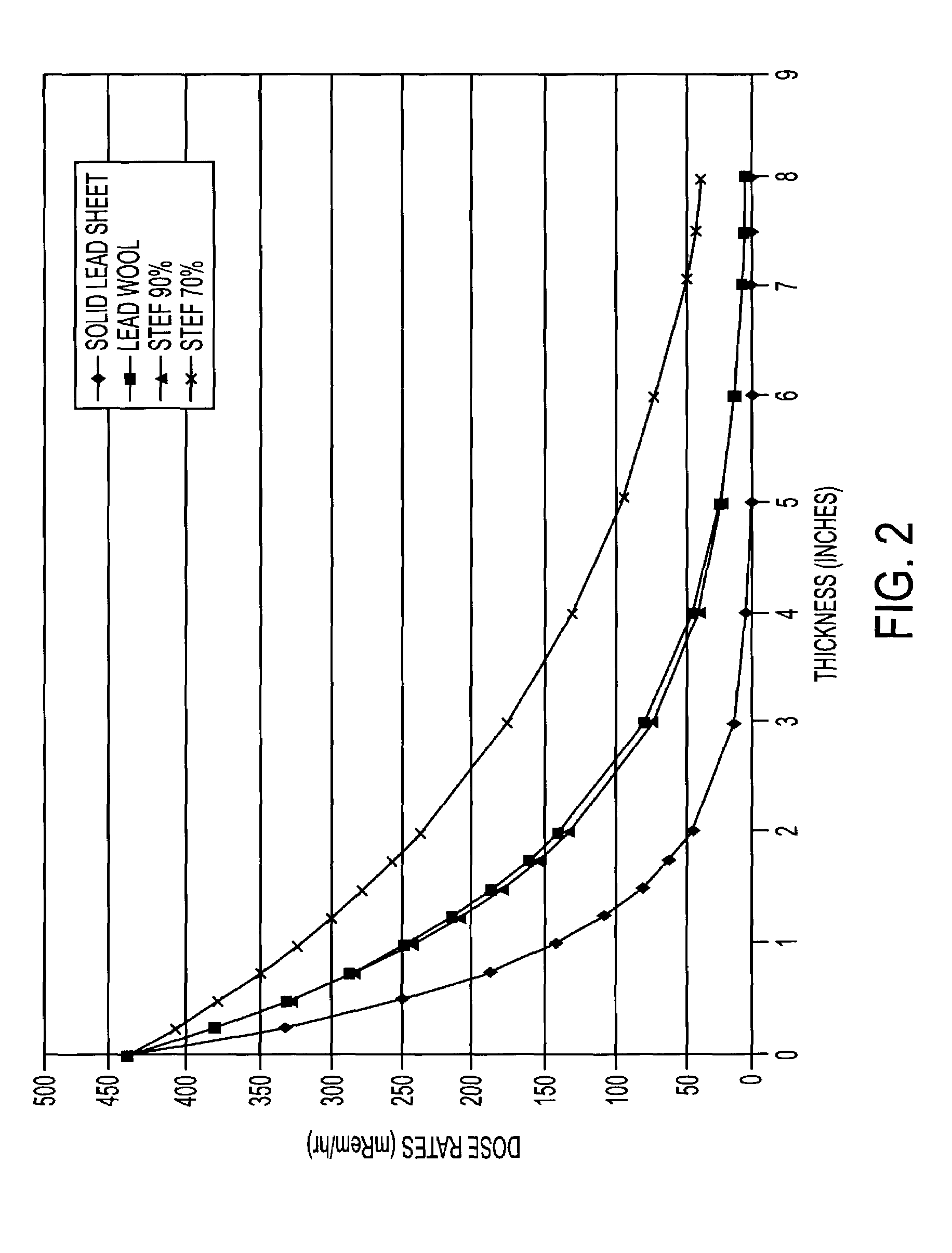Radiation shielding
a radiation shielding and material technology, applied in the direction of non-metal conductors, nuclear elements, conductors, etc., can solve the problems of not being able to meet the requirements of a work environment, requiring following potentially difficult or expensive guidelines, and being difficult to dispose of regular hazardous materials, etc., to achieve effective radiation attenuation, easy to cut, and flexible
- Summary
- Abstract
- Description
- Claims
- Application Information
AI Technical Summary
Benefits of technology
Problems solved by technology
Method used
Image
Examples
example 1
[0064]An elastic, radiation shielding material comprising about 90 percent by weight tungsten and about 10 percent by weight silicone rubber was prepared (STEF 90%) in the shape of a sheet having a thickness of about 0.50 inches. As FIG. 2 shows the radiation attenuation obtained with the 90% silicone-tungsten material was comparable to if not better than the radiation attenuation obtained with lead wool. For example, a STEF 90% material having a thickness of 0.5 inches caused a 26 percent reduction in the level of radiation, or 326 mRem from 440 mRem.
[0065]Moreover, the silicone-tungsten material was sufficiently flexible as to allow wrapping it around small size tubing, e.g., having a diameter of 0.25 inches. The lead wool was substantially less flexible and allowed wrapping a tube of not less than approximately 1 inch.
example 2
[0066]An elastic, radiation shielding material comprising about 70 percent by weight tungsten and about 30 percent by weight silicone rubber was prepared (STEF 70%) in the shape of a sheet having a thickness of about 0.50 inches. FIG. 2 shows the radiation attenuation obtained with this material at various thicknesses. As FIG. 3 shows the radiation attenuation of radiation emitted by a cobalt-60 radioactive material obtained with a 1 inch thick STEF 70% material was comparable to if not better than the radiation attenuation obtained with a 0.50 inches thick lead wool.
[0067]Moreover, the silicone-tungsten material was sufficiently flexible as to allow wrapping it around small size tubing, e.g., having a diameter of 0.25 inches. The lead wool was substantially less flexible and allowed wrapping a tube of not less than approximately 1 inch.
example 3
[0068]An elastic, radiation shielding material comprising about 90 percent by weight bismuth and about 10 percent by weight silicone rubber is prepared in the shape of a sheet having a thickness of about 0.50 inches. The radiation (silicone-bismuth) material exhibits radiation attenuation of radiation emitted by a cobalt-60 radioactive material that is comparable to that obtained with a 0.25 inches thick lead wool blanket. Moreover, the silicone-tungsten material is sufficiently flexible as to allow wrapping it around small size tubing, e.g., having diameter of 0.25 inches.
PUM
| Property | Measurement | Unit |
|---|---|---|
| particle size | aaaaa | aaaaa |
| diameters | aaaaa | aaaaa |
| diameters | aaaaa | aaaaa |
Abstract
Description
Claims
Application Information
 Login to View More
Login to View More - R&D
- Intellectual Property
- Life Sciences
- Materials
- Tech Scout
- Unparalleled Data Quality
- Higher Quality Content
- 60% Fewer Hallucinations
Browse by: Latest US Patents, China's latest patents, Technical Efficacy Thesaurus, Application Domain, Technology Topic, Popular Technical Reports.
© 2025 PatSnap. All rights reserved.Legal|Privacy policy|Modern Slavery Act Transparency Statement|Sitemap|About US| Contact US: help@patsnap.com



